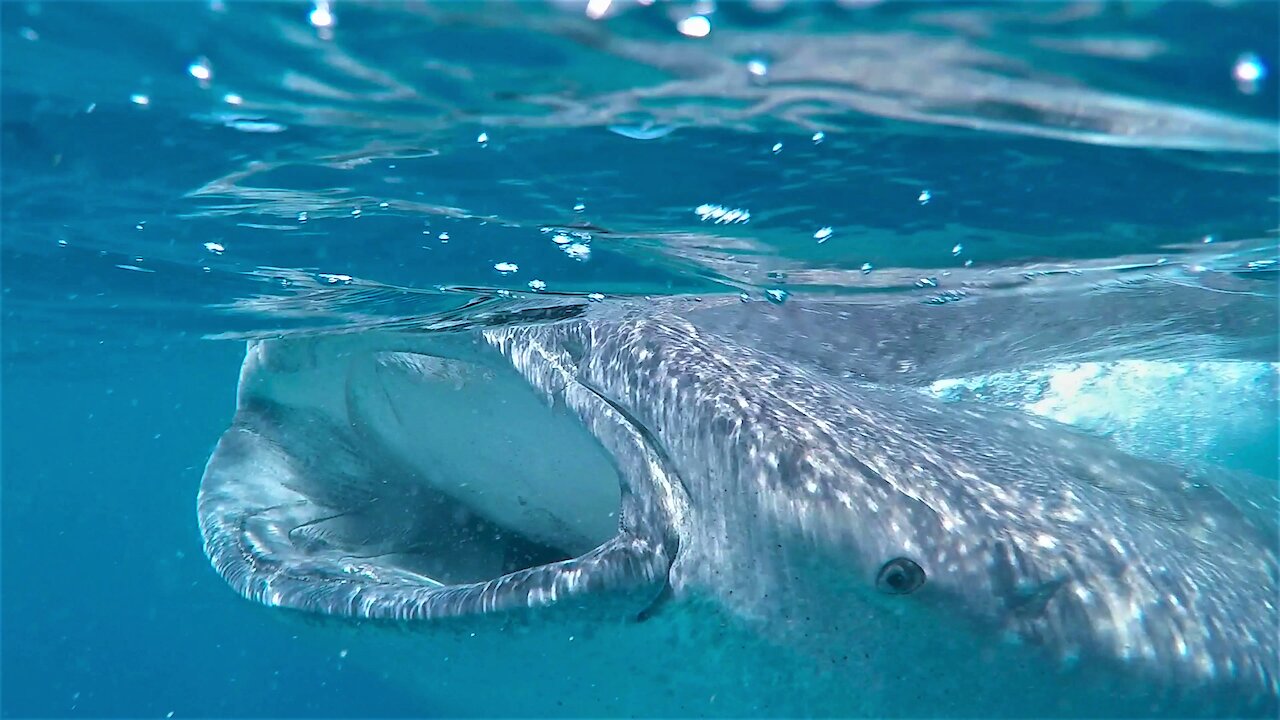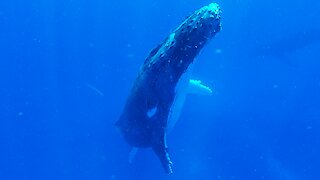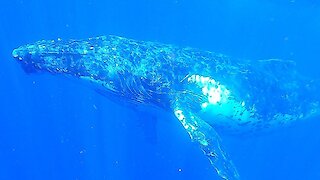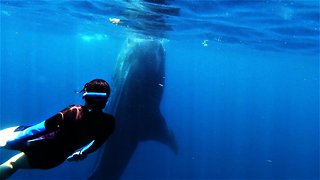Premium Only Content

Gigantic whale shark swims within inches of swimmers in Mexico
Whale sharks are among the most majestic and beautiful creatures on earth. Reaching lengths of up to 18m (55 feet), and weighing upwards of 46,00kg (100,000lbs), they are the largest fish in all the oceans. Only a few whale species are larger. But, despite their enormous size, they are the gentlest of giants. They are incapable of harming a human, even if they wanted to. They have no teeth and they have no aggression towards people.
Whale sharks feed by swimming through the water with their mouth open, filtering plankton, fish eggs, and krill, along with the occasional tiny fish. They have huge combs called baleen that allow them to capture food and expel water through their gills. They are able to outswim humans easily and they can swim away from predators or dive deep to avoid them.
These swimmers in Mexico were part of an ethical tour that allows wildlife photographers and videographers to enter the water cautiously and wait for a whale shark to swim near enough to record them. Strict about the rules and regulations regarding distance from the animals, photographers and guests may only enter the water with a licensed guide and they must avoid causing the sharks any stress.
These photgraphers were thrilled to see a whale shark headed right toward them. With its mouth open, it gave them a close look down its throat as it passed within inches of them. As required, the swimmers remained motionless and waited. The shark was close enough to touch, but there are good reasons why they refrained. As the shark passed by them, they turned and followed. This whale shark casually swam along, unconcerned with their presence.
A close encounter with a creature so magnificent is a once in a lifetime experience.
Anyone considering a tour like this should seek only an ethical operation. Serious Diving in Isla Mujeres not only follows the rules carefully to avoid negative effects on the animals, but they also contribute to development of protection policies and to conservation efforts.
-
 0:42
0:42
WildCreatures
5 years ago $31.69 earnedMassive whale shark swims directly under surprised scuba diver
13.5K5 -
 0:34
0:34
WildCreatures
5 years ago $7.10 earnedYoung whale shark swims right into boat with his head
8.8K1 -
 1:04
1:04
WildCreatures
4 years ago $29.71 earnedMother humpback whale proudly visits swimmers with her new baby
14.3K9 -
 1:09
1:09
WildCreatures
5 years ago $25.69 earnedSleeping humpback whale slowly surfaces beside thrilled swimmers
17.7K4 -
 0:51
0:51
WildCreatures
5 years ago $9.59 earnedMassive whale shark has horrible propeller injuries
579 -
 1:34
1:34
WildCreatures
5 years ago $7.01 earnedWildlife videographers capture unusual whale shark feeding behavior
412 -
 1:30
1:30
WildCreatures
5 years ago $4.19 earnedSwimmers join humpback whale as it bellows out beautiful song
10K3 -
 0:50
0:50
WildCreatures
5 years ago $2.09 earnedSwimmer Photo Bombs Beautiful Encounter With Whale Shark
3.59K -
 0:30
0:30
WildCreatures
5 years ago $6.86 earnedHumpback whale performs incredible leaping breach very close to swimmers
16.3K4 -
 1:37
1:37
WildCreatures
5 years ago $7.68 earnedPhotographer has once in a lifetime swim with giant whale shark
4.85K1